Thinking Big from 2 Pioneers in Medicine

*This article was originally published on 12/1/2014 and republished on 2/3/2023.
Greatness needs no description. You know it when you see it. It’s presence is palpable.
Many are good at their profession or craft, but in any area or field there is always only a few that are truly outstanding. They are the great ones – the ones that shape and transcend their fields – and by necessity ahead of their times.
They are the ones brave enough to challenge coventional wisdom. They are the innovators. They leave behind footprints too large to fill and create an immeasurable impact on the world around them. I’ve had the privilege of working with two such men, both physicians.
Today I pay tribute to two giants in medicine that understood the magic of thinking big; Dr. Jack Hughtston and Dr. Kenneth Cooper, two pioneers in medicine. From them I’ve learned 15 invaluable lessons that I share towards the end of this article.
These lessons apply to life as much as they do to the practice of medicine. If you’re pressed for time, you might want to want to fast forward to the end – what comes before that is set up.
Both Dr. Hughtston and Dr. Coooper were visionaries. Both men overcame great obstacles. Both men achieved what others said was not possible – because they saw what others did not see, dreamed what others did not dream, and thought what others did not think.
Both men built innovative practices based on unprecedented vision, research, innovative practice models, a focus on improving human function, and an emphasis on patient and community education. And, this was all possible from thinking big.
I learned that is possible to take something that anybody can do, and do it in such a way that no one else can do it. I’ve also learned that we are limited most, not by our knowledge or skill, but rather by the breadth and depth of our thinking or vision. Those are the two most important of of the many invaluable lessons I learned from these pioneers in medicine.
Unfortunately, much of the practice of medicine today occurs in uninspiring settings using antiquated practice models lacking innovation that makes getting better than average results challenging. But, when we expand our thinking beyond the routine or norm – start thinking big – a medical practice can impact medicine in incredible ways.
To highlight the effects of big thinking I will share my experiences at two of my stops during my career – The Hughston Clinic and The Cooper Aerobics Center – and the invaluable lessons I’ve learned from the founding fathers of those two organizations.
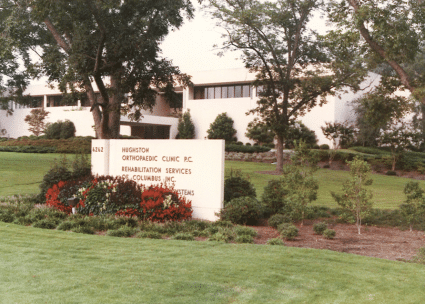
The Hughston Clinic
The Hughston Clinic was founded in 1949 by Dr. Jack Hughston, an orthopedic surgeon, and widely recognized as one of the fathers of sports medicine. Having injured his knee in the war Dr. Hughston developed a keen interest in knee problems.
He realized he could do a better job of treating knee injuries if he could better understand the mechanism of knee injuries prompting him to become one of the first physicians to stand on the sidelines of college football games. The sidelines of Auburn University football became his laboratory and classroom.
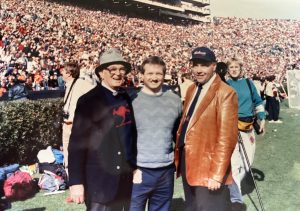
Over the years he developed many surgical techniques describing them in medical journals providing his own anatomic drawings. He gave numerous presentations at orthopedic meetings and over time cobbled together a small group of orthopedic surgeons to engage in clinical research and to begin to build the most innovative orthopedic practice of its time.
He was the founder of the American Journal of Sports Medicine serving as its editor from 1972 to 1990. A significant amount of clinical research on sports injuries and general orthopedics during the 1970s and 1980s emanated from the Hughston Clinic, a private institution, not the prestigious academic centers.
By the time I arrived at the Hughston Orthopaedic Clinic for my sports medicine fellowship in 1989 Dr. Hughston and his partners had built the leading orthopedic and sports medicine practice in the country on a beautiful 100-acre campus. The entrance of the campus is graced with a statue of the Greek discus thrower.

In association with HCA the first Sports Medicine Hospital of its kind was built on the campus in 1984 – a 100-bed state of the art facility. The campus is home to the practice’s main office building and houses a rehabilitation center and small fitness center. An outdoor running track is located behind the clinic building. The Hughtston Clinic now operates ten office locations covering a few hundred miles throughout Georgia and Alabama.
The centerpiece of the main campus, however, is the Hughston Foundaton. A stately complex with Greek columns, it was Dr. Hughston’s pride and joy. In its library nearly all knowledge regarding orthopedics and sports medicine can be found. Now with electronic media part of the library has been converted into a museum.
During my stay the two full-time librarians were kept more than busy performing literature searches for research projects for 17 staff physicians, 10 fellows, and the two Tulane orthopedic residents rotating through at any time.
The building also contains a large conference room with the latest audio/visual technology. To improve the quality of research and publications the Foundation, which also housed the American Journal of Sports Medicine hired medical illustrators (Emily Craig is world renowned), medical writers, and research PhDs.
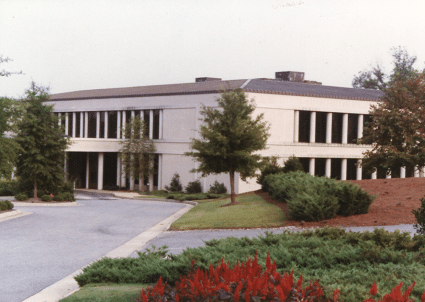
To better educate physicians and patients two audio-visual technicians prepared slide presentations and developed high quality educational videos for patients (unheard of at the time). This was in the computer era of the floppy disc.
The Foundation produced beautiful gloss colored educational publications for referring physicians, and a monthly newsletter for anybody who wanted to receive it, all for free. I served on the editorial board for the newsletter as a fellow representative and developed an appreciation for written word. I gained my first experience at writing patient education content.
In 1989-90 and at the age of 73 Dr. Hughston was no longer operating, but from his office in the Foundation he had audio/visual hook-up to each of the operating rooms in the hospital. He could communicate with surgeons while they were operating, was available to answer questions on tough cases, and wasn’t shy to give unsolicited advice. He was able to teach from afar. This was all very revolutionary at the time.
In much the same way that President Lincoln took advantage of the evolving art of photography, and the inventions of short hand and the telegraph, Dr. Hughtson and the Hughston Clinic implemented fully the technology of the times.
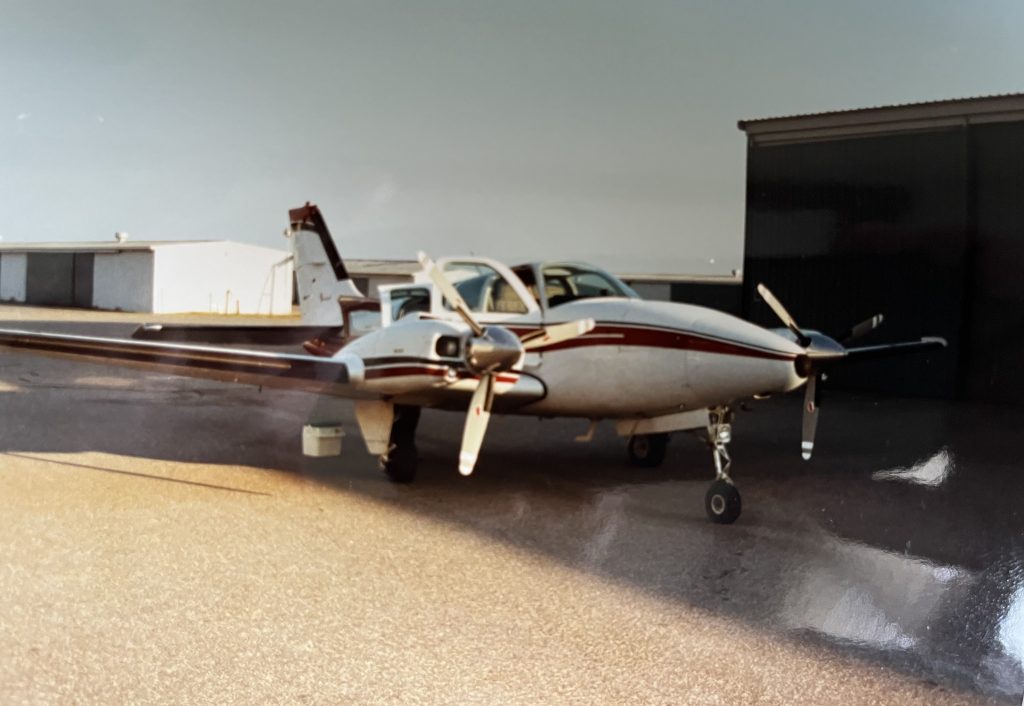
To further expand the practice, enhance the learning experience for the fellows, and as a way of giving to back the community, the Clinic established flying clinics to rural areas in Alabama and Georgia.
The Clinic owned two airplanes (one a King Air). Every Monday, Tuesday, and Wednesday afternoon every other week a staff physician, two fellows, and an ATC/PT would fly to these rural outposts holding free walk-in clinics held in the gymnasiums of junior colleges.
Throngs of patients with x-ray folder in arm would await our arrival. Most of them would make the 5 to 6 hour drive to the campus if they needed surgery. Devoid of technology at these flying clinics we had no choice but to sharpen our clinical skills.
The planes were also used to fly teams of doctors to provide medical coverage for college football games. At a time when there was little local sports medicine competition the Clinic once simultaneously served as the team physicians for Auburn University, University of Alabama, University of Kentucky, University of Virginia, Valdosta State University, and Troy State.
When not flying doctors around the two pilots (Bill and Stan) would fly across the country picking up for cadaver parts – knees and shoulders so the orthopedic fellows could hone their skills. The Hughston Clinic had a reputation of producing the most highly skilled orthopedic surgeons.
The Foundation was funded in part by mandatory “tithes” from its physicians. Being invested in the success and mission of the Foundation, physicians eagerly engaged in research, patient education projects, and development of community programs.
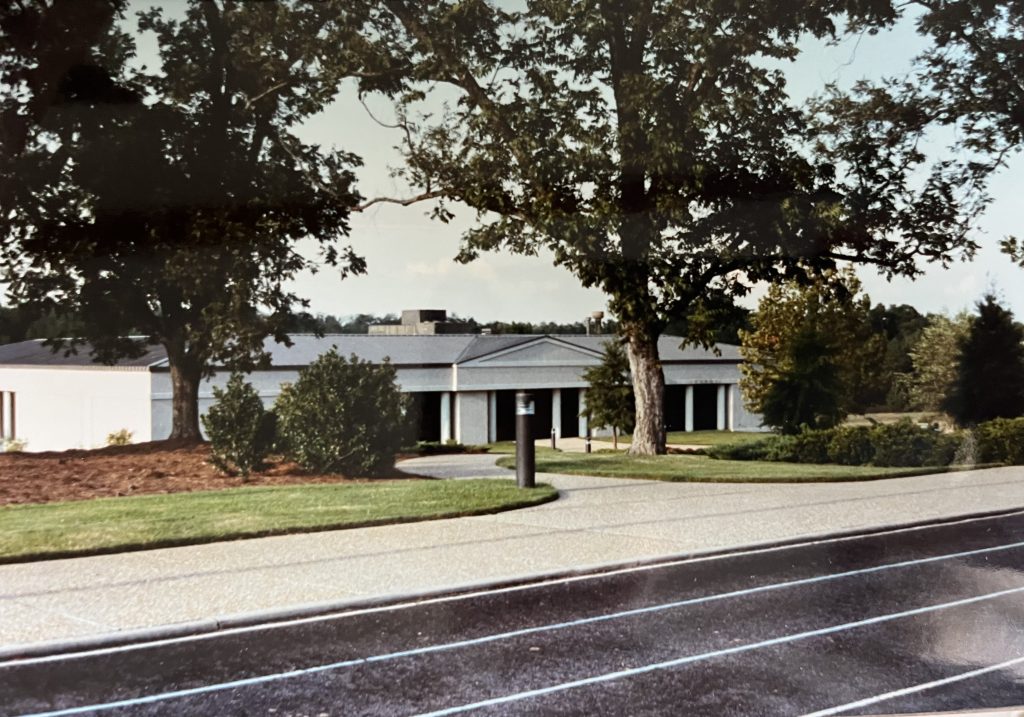
Perhaps most impressively, the Hughston Clinic was not built in a major metropolitan area, but rather near the banks of the Chattahoochee River in the once fledging Confederate Civil War supply town of Columbus, Georgia.
If you build it, they will come is a line from the movie Field of Dreams. Dr. Hughston and his colleagues did build it, and the patients did come – they came from all over the country and all over world to obtain the best orthopedic care.
The year I spent there was the most rewarding and influential year of my professional career. It’s because I was in a state of constant learning and exploration – each day brought new challenges prodding me to develop new skills.
To be surrounded each day by talented physicians, medical writers, medical illustrators, research PhDs, audiovisual technicians, and others committed to their craft brought out the best in those of us blessed with that opportunity.
I would sit in the library, look around in awe at the incredible opportunity I was given, and get goose bumps realizing this was one of those once in a lifetime events. And, I wasn’t going to let it slip away. I took full advantage of that year as best I could.
I commented to Dr. Hughtson at the end of the year that it must be rewarding for him to see how much we learned during the year as a new crop of fellows were about to begin. His response provides a glimpse of this simple country man. Hell, y’all better have learned something, or it was our fault (for maximum effect say in your best southern drawl).
One of his trademark sayings was simple, but something most of us fail to do. Trust and believe your own experiences. His other reflects the importance of being a lifelong learner striving to continuously improve. As long as you’re green you’re still growing. Once you’re ripe you’re next to rotten. When he died in 2004 at the age of 87 he was still green, still growing, and still learning.

The Cooper Aerobics Center
From the Hughston Clinic I accepted my first position at the Cooper Clinic in Dallas now known as the Cooper Aerobics Center. It was founded by Dr. Ken Cooper who served as a flight surgeon in the U.S. Army and U.S. Air Force for 13 years.
Dr. Cooper developed the early exercise and training programs for the Air Force, NASA and many of the field tests most of us performed in elementary or middle school such as the 12 minute walk-run and 1.5 mile test (both of which provide close approximations of VO2 max).
In 1968 Dr. Cooper wrote a book – the first of the 19 that he has written to date. The book was simply called Aerobics. It was the first time that the word “aerobics” was used to describe cardiovascular exercise. The book help catapult the fitness movement that continues today.
In 1970 he left the Air Force to open what may be the first preventive medicine clinic. He did not want to leave the Air Force, but they did not share his same vision regarding preventive medicine.
Limiting one’s practice to prevention was unheard of and denigrated by mainstream medicine at that time (and still is today to some degree) as the Cooper Clinic was busily engaged in pioneering the Executive Health Examination and educating patients in ways to prevent disease.
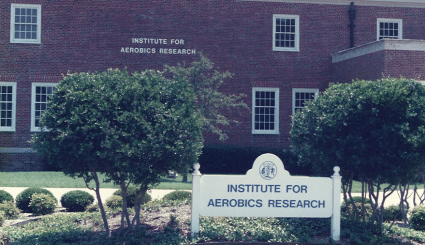
The complex he would eventually build was nearly derailed shortly after his arrival in Dallas. Despite centuries of writings that even pre-date Hippocrates regarding the benefits and virtues of exercise Dr. Cooper found himself at odds with medical establishment which felt exercise was unsafe in men and women over age 40. Dr. Cooper held firm though, willing to jeopardize his medical license to practice, and eventually prevailed.
When he arrived in Dallas in 1970 he owned the only treadmill in the city. The trials and tribulations he faced in those early years are chronicled in his fifth book, The Aerobics Program For Total Well-Being.
Like Dr. Hughtston Dr. Cooper recruited a small number of physicians who shared his vision and built an enterprise. Now at age 83 he oversees a conglomerate of eight health and wellness related business ventures. It is easier to maintain good health through proper exercise, diet, and emotional balance than to regain once it is lost, became his trademark saying. Such an obvious a statement, yet such a novel thought within the walls of the medical establishment.
At a formative time in my career I learned that exercise and nutrition could more than prevent disease. It could also treat most chronic disease. I was stunned to see some very abnormal stress EKGs improve with aerobic conditioning.
Next to nutrition, exercise is and always will be the best medicine. Helping patients get off some of their medications was rewarding and commonplace. Simply telling someone to exercise does not work. There has to be a workable plan.
Detailed exercise programs were given to patients each designed to move them to the next level of cardiovascular fitness over a 6 to 12 week time frame. Programs were designed for the 32 year old male in good fitness would was interested in cycling or swimming as well as 65 year old female in poor fitness who was interested in walking or stair-climbing, and everybody in between.
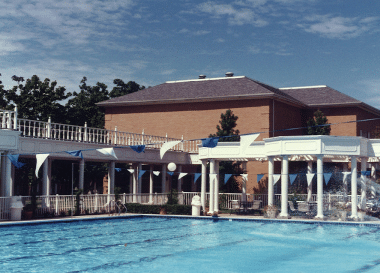
Dr. Cooper has a simple formula for patient care. Evaluate, Educate, Motivate, and Re-evaluate! The re-evaluation is a successful motivational tool keeping patients on track.
Before even seeing his first patient in 1970, Dr. Cooper established a research foundation originally known as the Institute for Aerobics Research home of the largest database in the world on the health benefits of exercise. Many public health recommendations regarding exercise are based on Cooper Clinic data.
Unlike the Hughston Clinic where physicians do the research, the Institute for Aerobics Research relies on PhDs and epidemiologists with clinic physicians providing the data. The Institute has published over 600 articles in peer-reviewed journals and its studies are among the most cited.
The Cooper Clinic performs among the most comprehensive physical examinations in the most efficient way possible – the result of only doing one thing and doing it extremely well. The examination the Cooper Clinic performs in one day once took the Cleveland Clinic and Mayo Clinic two and a half days to three days. On top of that all results are available to the patient before they leave with a plan to reach their goals.
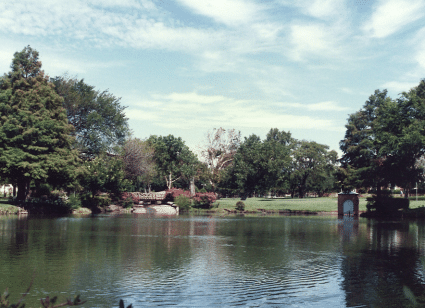
The Cooper Aerobics Center is extremely active in the community hosting educational and fitness programs for all ages. It has become a great educational resource for the community. The Center also trains personal trainers and offers its own certification examination.
The 25-acre campus consists of colonial home-style clinic, large fitness facility, spa, two swimming pools, the research institute, and a 61-room hotel (a significant number of patients are not local). Walking and running paths (quarter, half, and full mile) meander through the campus that contains two lakes. The video below provides an overview of the campus.
Dr. Hughston and Dr. Cooper – two very different men with the identical goals and ambition – to elevate the practice of medicine, contribute to the medical literature, pioneer new treatments, assist patients to reach the highest level of function possible, while touching patients’ lives in very personal ways. (It’s possible to treat illness without improving function, but it’s nearly impossible to improve function without improving health. We should focus more on improving function).
If we compare them to former Ohio State football coaches Dr. Hughston would be Woody Hayes. He was tough, demanding, and nobody could out work him. Dr. Cooper would be Jim Tressel – cerebral, calculating, and an outstanding public speaker.
The history and impact of Steadman-Hawkins Clinic of the Carolinas and Cenegenics Medical Institute, two of my other stops are nearly as compelling. Now the lessons from these two giants in medicine:
The 15 Thinking Big Lessons I Learned
- I learned that it’s possible to elevate any practice to a previously unknown level by doing the common in an uncommon way. It is possible to take something anybody can do, and do it in such a way that no one else can do it. Anybody can practice preventive medicine – but nobody does it as well as the Cooper Clinic does it. It has little to do with knowledge, and little to do with skill. It has to do with depth of vision and commitment. It has to do with thinking big.
- I learned that passion and vision are the keys to success. Dr. Hughston and Dr. Cooper are very different men, but both had/have an unrelenting passion to learn, apply, and educate. Both saw the future because they helped shape it. They created the future they wanted to live and practice medicine in. Rarely do we achieve beyond the degree of our thinking. It takes as much effort to dream big dreams as it does to dream small dreams. So why dream for the small?
- I learned that research establishes credibility, spawns new innovations, improves patient care, while providing an important advantage over competitors by being on the leading edge.
- I learned that continuous learning is fun, rewarding, contagious, and creates a sustaining form of energy.
- I learned that patients are naturally drawn to places that are eager to teach them. And, that patient education pays dividends in untold ways as patients truly become our best marketing tools next to the core of our own being (in other words who you are and what you represent is your best marketing tool).
- I learned the art of medicine is rooted in forging a partnership with the patient, not in the paternalistic approach so commonly employed, while making each patient feel valued and important. I learned more about the art of medicine and the importance of patient education at the Hughston Clinic than anywhere else.
- I learned that customer service, attention to detail, and efficiency are essential to operating a successful practice. No place I know does these better than the Cooper Clinic.
- I learned that we can borrow from other industries – that knowledge and developments in fields outside of medicine (technology being on example) could be effectively used to improve the practice of medicine and progress its evolution.
- I learned that it only takes a small group of committed professionals to make a significant difference.
- I learned, in fact, to trust and believe my own experiences – not easy to do when your experiences are contrary to what you have been taught and expected.
- I learned that prevailing thought and conventional wisdom in medicine is sometimes wrong and when it’s wrong, it’s very wrong. Therefore, be sure that whatever you do is the product of your own conclusion. We should challenge more what we are taught than we do.
- I learned that Maria Montessori is right – the preparations for life are indirect. Our past experiences prepare us for the future if we’re smart enough to connect the dots. So accumulate as many experiences as possible. Try things (like writing for me) that you never did before. Who knows where new skills and knowledge will take you.
- I learned that breakthrough developments occur when there is a breakthrough in thought. Yet, mainstream thought tends to be very static and calcified. Thus, nearly every new breakthrough means bucking the establishment of any profession. At times you have to be willing to be a “radical” within your profession.
- I learned that if we focus on achieving optimal health and fitness we will naturally do a better job of preventing and treating disease.
- I learned that with open minds, creative forward thinking, meticulous planning, perseverance, steadfast belief, hard work, unshakeable faith, and with intentions firmly rooted in the helping and serving of others, that all things are indeed possible.
What is Big Thinking (Dreaming)?
So what is big thinking or dreaming? To me big thinking takes you beyond your own abilities and immediate resources as they now stand. Big thinking requires getting out of your comfort zone.
Big dreaming requires the help and expertise of others, and faith that you will eventually get the end result desired. We rarely achieve beyond our thinking. For big things to happen you must think big and expect big things to happen. The more you stretch yourself the more you increase your abilities and resources enabling you to think even bigger the next time around. That’s how it works.
If You Can Dream It, You Can Do It
Dr. Hughston and Dr. Cooper were/are no more intelligent than most physicians, but they accomplished so much more. And, they did so because they simply thought bigger. The lessons I learned from them apply to life. Far too many individuals live small lives – trapped by their own small thinking – don’t be one of them! Do not be a tiny thinker or dreamer.
Think back to when you were younger – back in high school when you gave the future some thought. Now fast forward to today. Is who you are, what you have, and where you are what you aspired to or dreamed of back then? And, if not, why not? It most likely has to do with the size of your thinking. Somewhere along the way many begin to settle for less. They scale down their expectations and unknowingly begin to think small. But, that can all change. THINK BIGGER for better results!
Walt Disney said, If you can dream it, you can do it. Think about that for a second and ponder that thought. It’s quite radical. It’s revolutionary. It’s a game changer – for those brave and bold enough to embody and internalize that belief.
Would God give us the ability to dream something, and then not provide to us in one way or another the means and tools to make those dreams come true? It would seem not. To do that would be about the cruelest thing you could do to someone, and I don’t think God is cruel.
Imagine planting a dream in someone’s conscious – a dream so strong that it moves someone into action, but then not give them the ability and resources to achieve or reach that dream. That is the ultimate torture test – to see something that doesn’t yet exist, to have the desire to make it reality – yet no means to do so.
That is something God would not do to any of us. No, if we can dream it , we can in fact do it (but likely will need help from others. See Help Me Do This All By Myself), as Mr. Disney says. And, it’s not an inconvenience to God if you think or dream big. I suspect He likes being challenged now and again.
In fact the Bible says. Now to him who is able to do immeasurably more than all we ask or imagine, according to his power that is at work within us … (Eph. 3:20). What this means is this. God can top anything you can imagine or dream. All you have to do is ask (the easy part) and truly believe (the hard part). God works miracles through ordinary people.
You are not talented enough to bring a big dream to reality by yourself. You will need to enlist the help of others just like Dr. Hughston and Dr. Cooper did. Enlisting help from others is a main stumbling block for those who are unable to fulfill their dreams.
We all know people who have enjoyed great success and they invariably say the same thing – that what they achieved is beyond their wildest dreams.
We naturally move in the direction of our thoughts and dreams. So keep your thoughts and dreams in the forefront and you will find yourself heading in their direction.
When we thing big and act on those dreams, the solutions to the obstacles that stand in the way eventually become visible – and just when they need to be – no sooner. Doors open and people who can help enter your life unexpectedly.
God moves after we move. We must move first. It’s called faith. It’s His way, I believe, to see how serious or committed we are to something. His movements are in proportion to ours as well. The bigger step we take, the bigger step He takes. Such big steps require a big faith, a big dream, and big thinking
You just have to stay persistant long enough to see that “light” – to stay in the game long enough for the answers to the obstacles to be made visible. That’s what Dr. Hughston and Dr. Cooper did – and that has separated them from the masses – and have enabled them to live bigger lives as well – just one of many byproducts of thinking big!
There is a 16th lesson. Learning these lessons is much easier than applying these lessons. And, that’s the real challenge with anything we learn. In fact, applying these lessons is extraordinarily difficult – which is why there are so few great people and so few big thinkers.
Quotes on Imagination/Dream
- Imagination is more important than logic. Logic will get you from A to Z; imagination will get you everywhere. Albert Einstein
- Anyone who lives within their means suffers from a lack of imagination. Oscar Wilde
- Imagination is everything. It is the preview of life’s coming attractions. Albert Einstein
- Imagination does not become great until human beings, given the courage and the strength, use it to create. Maria Montessori
- Reality leaves a lot to the imagination. John Lennon
- Children see magic because they look for it. Christopher Moore
- The true sign of intelligence is not knowledge, but imagination. Albert Einstein
- Imagination is the beginning of creation. George Bernard Shaw
- Imagination is the organ of meaning. CS Lewis
- Imagination rules the world. Napoleon Bonaparte
- Imagination decides everything. Blaise Pascal
- If you can imagine it, you can achieve it. And if you can dream it, you can become it. William Arthur Ward
Remember this thought. Dreaming big is a sign of faith and maybe the best sign.
This article was originally published on 11/10/2014.

